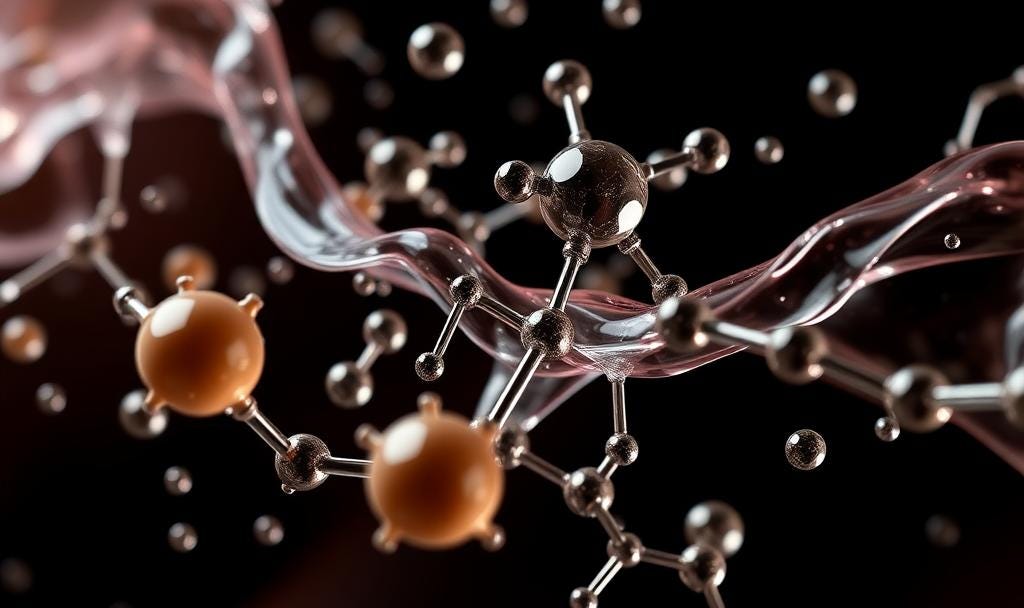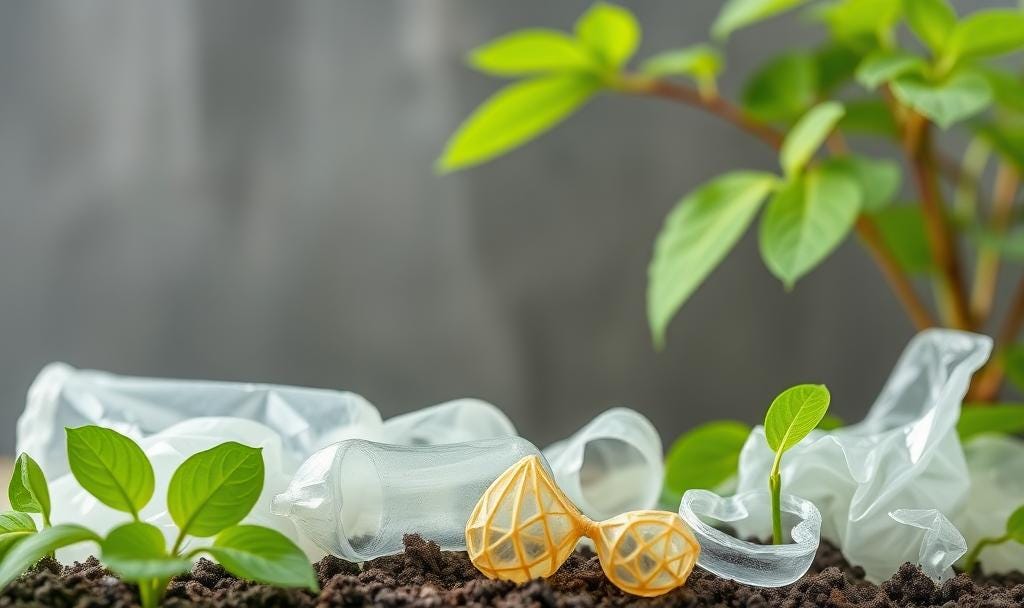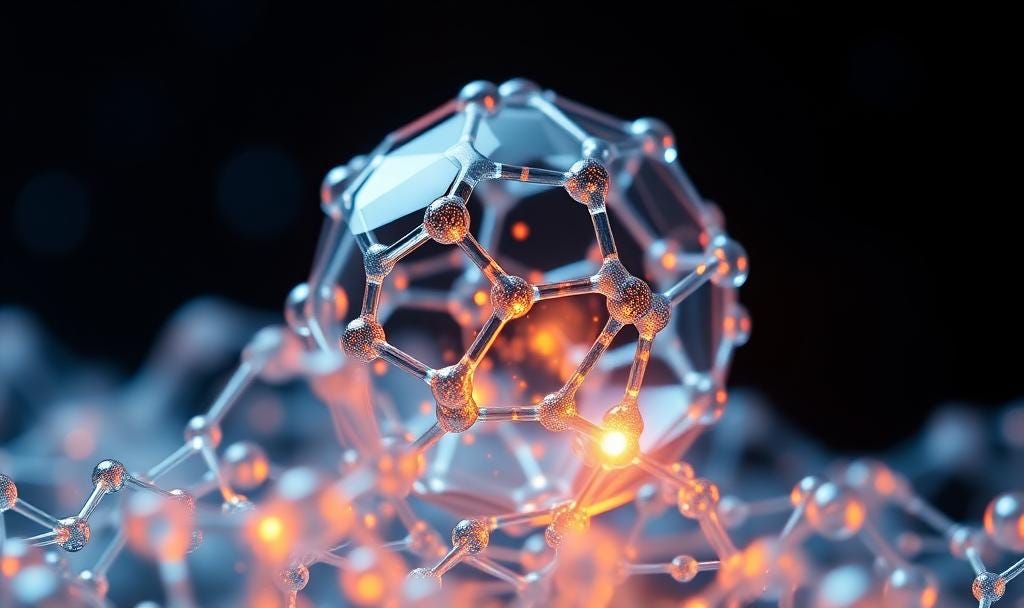Quiet Revolution: The Exciting Impact of Next Gen Polymers
How biodegradable, conductive, and smart polymers are transforming everyday life
Can you believe it’s already July? Longer days are here, tomato sandwiches are back in rotation, and it’s a natural halftime to revisit those fun January predictions—a New Year’s remix, so to speak. As I sat sifting through hot takes online, one word kept surfacing amidst all the GenAI buzz: polymers. With summer in full swing, I couldn’t help but wonder what innovations are right around the corner for these behind-the-scenes heroes. Whether I’m putting together a complicated model car, cracking open a cold seltzer, or scrolling poolside, polymers are there—flexible, invisible, and absolutely essential. They may work behind the scenes of our lives for now, but the next generation of polymers is poised to step into spotlight.
Biodegradable plastics
For years, traditional plastics have lingered like unwelcome guests, staying a little too long after the party has ended. We’ve seen the effects of microplastic pollution on humans and animals up close, given plastic’s ubiquity and our ongoing recycling challenges. This year, however, biodegradable polymers like Polylactic Acid (PLA) are finally ready to step up. These are plastics made from materials that are either biobased and/or degradable under defined conditions.1 These materials break down naturally, sometimes in just a few months, whether they’re in a compost bin or out in the wild. While bioplastics only account for 1–2% of all plastics, there is hope that in the future they could replace up to 90% of all fossil-based plastics.2 This shift could be a game-changer for sustainability in the near future.
Conductive polymers
Conductive polymers, or plastics that can conduct electricity, are rapidly elevating the wearables experience. Unlike traditional wires or rigid circuits, these materials stay lightweight and malleable, allowing your device to move seamlessly with you. Imagine fitness trackers that feel like a second skin, or even next-gen “electronic skin” that mimics human touch and sensation.3. 4 This family of polymers can make our devices smarter, more intuitive, and more coordinated with the way we live, work, and play.
Self-healing polymers
It happens to the best of us: A dropped phone, a scratched pair of sunglasses after a spirited game of pool volleyball. Enter self-healing polymers that can autonomously repair microcracks or damage. These plastics can “repair” themselves after a ding or a scratch, almost like magic.5 In the very near future we may have standard option car bumpers that “remember” their shape after a fender bender, or phone screens that smooth out imperfections on their own.6 Self-healing materials are on the cusp of setting a new expectations for durability and longevity, giving us one less thing to worry about when little accidents strike. On a larger scale, imagine the possibilities in industries like aerospace or marine engineering, where maintenance can be costly or dangerous.7
Smart polymers
Smart polymers are flexible and responsive. They can change their molecular structure and function to suit environmental changes in temperature, pH, or even light, shifting their properties on demand.8 The possibilities are endless: Drug delivery systems that release medicine precisely when your body needs it, or clothing that cools you down as temperature rise.9, 10 Expect to see smart polymers popping up more frequently to give our lives an upgrade.
How many ways do you think polymers are making your everyday life easier—often without you even noticing?
As we dive into the rest of summer, whether piecing together elaborate creations with bricks, soaking up sunshine by the pool, or just savoring life’s simple joys—remember the polymers quietly in the background. They may not steal the spotlight, but these behind-the-scenes heroes are helping some of the things you love to hold together just a little better.
Endnotes
Intro Polymer link: The Editors of Encyclopedia Britannica. “polymer,” Encyclopedia Britannica, April 21, 2025. Accessed June 16, 2025.
1. Lackner M, Mukherjee A, and Koller M, “What are ‘Bioplastics’”? Defining Renewability, Biosynthesis, Biodegradability, and Biocompatibility,” MDPI, Polymers 2023, December 13, 2023.
2. Ibid.
3. Yin F, Niu H, Kim E-S, Shin YK, Li Y, and Kim N-Y, “Advanced polymer materials-based electronic skins for tactile and non-contact sensing applications,” InfoMat, June 5, 2023.
4. Parker Wihelm, “Your next fitness tracker could be on your skin,” TechRadar, April 16, 2026.
5. Plastics Engineering, “Self-Healing Materials: The Future of Functional Polymers.”
6. Akhlaqul Karomah, “Repairing Phone Screens with Self-Healing Polymers,” Azo Materials, November 11, 2021.
7. Simon Hilton, “5 Polymers that Will Change the World,” June 4, 2025.
8. Arash Fattah-alhosseini, Razieh Chaharmahali, Sajad Alizad, Mosab Kaseem, and Burak Dikici, “A review of smart polymeric materials: Recent developments and prospects for medicine applications,” Hybrid Advances, Volume 5, April 2024.
9 Priya James H, John R, Alex A, and Anoop KR, “Smart polymers for the controlled delivery of drugs – a concise overview,” Acta Pharmaceutica Sinica B, Volume 4, Issue 2, P: 120–7.
10. Hasan, K.M. and Faridul et al., “Nanotechnology-empowered radiative cooling and warming textiles,” Cell Reports Physical Science, Volume 5, Issue 9, 102108, September 18, 2024.
—Rachael Nosin, Tech Leadership Development, Deloitte









